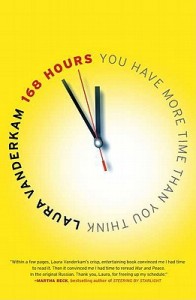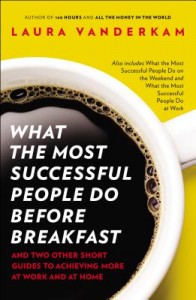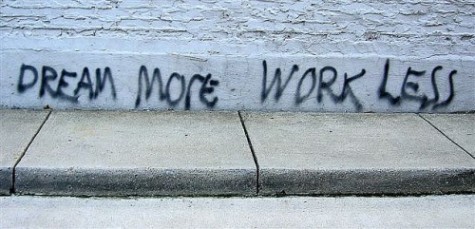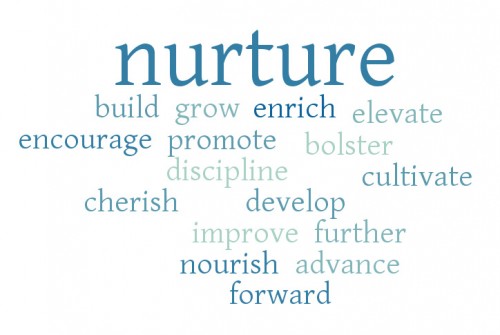One of the things that started to bug me in 2014 was my contribution to the “cult of busy” or “the busy trap” – the way people have of lamenting how busy they are in such a way that it becomes a kind of humblebrag, a complaint disguised as a boast to show how important they are to those around them (thanks, Puritan founders). I’ve come to embrace the idea that being busy isn’t inherently a good thing, and neither is thinking that we need to pretend we are more busy than we are because relaxation is thought of as laziness.
This became apparent to me over the last few months as I thought more about how I talk to people. I noticed that instead of engaging people in a conversation after being asked “How are you?” I was constantly defaulting to “Good! Busy. You?” And while sometimes that was true, often it was just a hedge, a way of deflecting conversation away from anything substantial like talking about what I’m actually working on… or admitting that my life was not as “busy” as I wanted to make it seem.
All things considered, I live a remarkably un-busy life. I don’t have kids. I live in a small town where my home is less than 1.5 miles from my job. I don’t keep an especially pristine house, and I don’t spend a lot of time cooking. Yet for most of this year I felt constantly harried and well, busy, like I was constantly behind on the things that I wanted to accomplish. It was frustrating.
How Do You Use Your 168 Hours?
 Enter 168 Hours: You Have More Time Than You Think by Laura Vanderkam, a look at time management that doesn’t rely on time-saving tricks, but instead asks the reader to think carefully about priorities and how to make them stick. As Vanderkam notes in her preface, “Once we see how much time we truly have, we start realizing that time management isn’t just about saving five minutes on the margins … true time management is about filling our lives with things that deserve to be there.”
Enter 168 Hours: You Have More Time Than You Think by Laura Vanderkam, a look at time management that doesn’t rely on time-saving tricks, but instead asks the reader to think carefully about priorities and how to make them stick. As Vanderkam notes in her preface, “Once we see how much time we truly have, we start realizing that time management isn’t just about saving five minutes on the margins … true time management is about filling our lives with things that deserve to be there.”
For me, 168 Hours served as both a manifesto for how to use time better and an outline for how to get there myself. Vanderkam opens the book with an argument that thinking about time over a course of a week – 168 hours – rather than a traditional 24 hour day opens up more possibilities to see time for what matters. After, she looks at different ways to manage and prioritize time at work and at home to fit the things that matter into every week (focusing on the things you are best at – your core competencies).
I won’t go into all those tips here – if you’re interested, read the book – but I do want to say that one important caveat is that much of the work-related advice in 168 Hours is targeted towards a certain demographic, I’d say mid- and upper-level professionals with moderately flexible work schedules or who supervise other people. Her suggestions about optimizing time at work don’t make a lot of sense if you’re, say, an hourly worker in retail or run a home daycare. I don’t think any of it is bad advice, just not entirely applicable depending on your work situation.
Instead, I’m going to talk about the two initial activities Vanderkam suggests for readers looking to better use their time, since they were both very helpful for me.
Keeping a Time Log
The first thing Vanderkam suggests doing is keeping a time log. For an entire week, check in about every 30 minutes and write down what you’re doing. This assessment is important because it gives you actual data about how you’re using your time. As Vanderkam notes, most people over- and under-estimate the time they spend on tasks, depending on how they want to be spending time. And more importantly, we don’t often think very hard about how we spend time until we are forced to do so. My favorite paragraph from the entire book gets at this:
“We don’t think about how we want to spend our time, and so we spend massive amounts of time on things – television, web surfing, housework, errands – that give a slight amount of pleasure or feeling of accomplishment, but do little for our careers, our families or our personal lives. We spend very little time on things that require more thought or initiative, like nurturing our kids, exercising, or engaging the limited hours we do work in deliberate practice of our professional crafts. We try to squeeze these high-impact activities around the edges of things that are easy, or that seem inevitable merely because we always do them or because we think other expect us to. And consequently, we feel overworked and under-rested, and tend to believe stories that confirm this view.”
Keeping a time log for two weeks was an instructive exercise for me. It forced me to be honest with myself and realize that I do have time for things that matter. The problem, it appears, is that I’m not using some open blocks of my time productively and, as a result, I’m pushing high-energy or high-impact projects (and self-care like exercise) into times of the day when I’m inevitably exhausted. These two factors meant that I ended each day feeling like I wasted a bunch of time and feeling too exhausted to use the time I did have for things that matter.
Making a List of Dreams
The second task of 168 Hours, after keeping at time log, is to make a list of 100 dreams. This list can be just about anything, it should just include things that you wish that you could do someday. Then, go back to the list and figure out why you haven’t done it yet. If there are things that are easy, find time to just get them done. And then start making plans for how to try the things you haven’t. The point of the exercise of two-fold – do things that make you happy, and figure out which of the dreams on the list you aren’t passionate about by giving them a try.
I haven’t gotten very far with this part yet, I think because it intimidates me. Setting down dreams in writing means you have to start thinking about how to make them happen, and I’m weirdly scared of that. But I’m going to do it because the only way to make your 168 hours feel more valuable is to fill them with things that matter.
Thinking Ahead to 2015
 Trying to think about how to work through these issues – particularly how to revamp my morning routine to be more effective – also led me to another one of Vanderkam’s books, What the Most Successful People Do Before Breakfast (which I mentioned in my post on my One Little Word for 2015). This paperback is a combination of three short ebooks that addresses some more practical examples of what “successful” people do to make the most out of their time in the morning, their time at work, and their time on the weekends.
Trying to think about how to work through these issues – particularly how to revamp my morning routine to be more effective – also led me to another one of Vanderkam’s books, What the Most Successful People Do Before Breakfast (which I mentioned in my post on my One Little Word for 2015). This paperback is a combination of three short ebooks that addresses some more practical examples of what “successful” people do to make the most out of their time in the morning, their time at work, and their time on the weekends.
I liked this as a companion, since the book went deeper into examples of how other people use their time better. They’re more immediately practical than 168 Hours, but didn’t help me ask some of the big questions that I need to work through first – I wouldn’t recommend it over 168 Hours, but definitely as a companion if Vanderkam’s style works for you.
Anyway, this is an awfully long way of getting around to saying that I got a lot out of reading 168 Hours, and I think it’s a great start for looking at how to manage and use time better. While I haven’t quite found answers to the many existential questions the book raised for me – what are the things that matter to me? What are my core competencies? How am I supporting those skills, and how am I addressing my weaknesses? – but I at least feel like I have a start.


 For twelve generations, when the fish were plentiful and when they all-but disappeared, the inhabitants of this remote island in Newfoundland have lived and died together. Now, in the second decade of the 21st century, they are facing resettlement, and each has been offered a generous compensation package to leave. But the money is offered with a proviso: everyone has to go; the government won’t be responsible for one crazy coot who chooses to stay alone on an island. That coot is Moses Sweetland.
For twelve generations, when the fish were plentiful and when they all-but disappeared, the inhabitants of this remote island in Newfoundland have lived and died together. Now, in the second decade of the 21st century, they are facing resettlement, and each has been offered a generous compensation package to leave. But the money is offered with a proviso: everyone has to go; the government won’t be responsible for one crazy coot who chooses to stay alone on an island. That coot is Moses Sweetland. The Rocky Mountains have cast their spell over the Courtlands, a family from the plains taking a last summer vacation before their daughter begins college. For eighteen-year-old Caitlin, the mountains loom as the ultimate test of her runner’s heart, while her parents hope that so much beauty, so much grandeur, will somehow repair a damaged marriage. But when Caitlin and her younger brother, Sean, go out for an early morning run and only Sean returns, the mountains become as terrifying as they are majestic, as suddenly this family find themselves living the kind of nightmare they’ve only read about in headlines or seen on TV. As their world comes undone, the Courtlands are drawn into a vortex of dread and recrimination. Why weren’t they more careful? What has happened to their daughter? Is she alive? Will they ever know?
The Rocky Mountains have cast their spell over the Courtlands, a family from the plains taking a last summer vacation before their daughter begins college. For eighteen-year-old Caitlin, the mountains loom as the ultimate test of her runner’s heart, while her parents hope that so much beauty, so much grandeur, will somehow repair a damaged marriage. But when Caitlin and her younger brother, Sean, go out for an early morning run and only Sean returns, the mountains become as terrifying as they are majestic, as suddenly this family find themselves living the kind of nightmare they’ve only read about in headlines or seen on TV. As their world comes undone, the Courtlands are drawn into a vortex of dread and recrimination. Why weren’t they more careful? What has happened to their daughter? Is she alive? Will they ever know?
 Enter
Enter  Trying to think about how to work through these issues – particularly how to revamp my morning routine to be more effective – also led me to another one of Vanderkam’s books,
Trying to think about how to work through these issues – particularly how to revamp my morning routine to be more effective – also led me to another one of Vanderkam’s books, 
